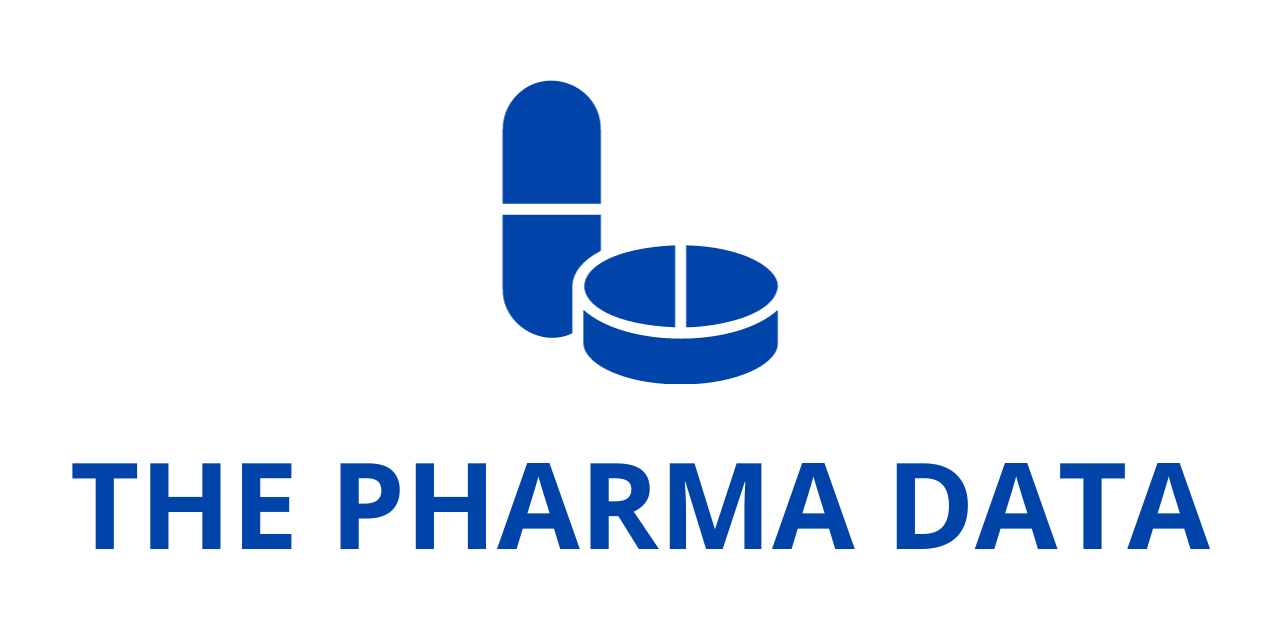
Takeda’s Oveporexton Achieves Landmark Phase 3 Success in Narcolepsy Type 1, Paving Way for First-in-Class Orexin Therapy
Takeda Pharmaceutical Company Limited (TSE:4502/NYSE:TAK) has announced a major milestone in its development pipeline, revealing that its investigational oral therapy oveporexton (TAK-861) has met all primary and secondary endpoints in two global Phase 3 clinical trials for the treatment of narcolepsy type 1 (NT1). These results position oveporexton as a potential first-in-class therapy designed to address the root cause of NT1, a rare neurological condition characterized by chronic excessive daytime sleepiness, cataplexy, and disruptions in the sleep-wake cycle due to orexin deficiency in the brain.
Oveporexton is a highly selective agonist of the orexin receptor 2 (OX2R), a class of therapeutics designed to compensate for the loss of orexin-producing neurons in NT1 patients. Orexin is a critical neuropeptide involved in regulating wakefulness and maintaining stable sleep-wake patterns. The absence of orexin-producing neurons in NT1 leads to fragmented sleep, sudden muscle weakness (cataplexy), and severe daytime drowsiness. By targeting OX2R, oveporexton aims to restore orexin signaling, thereby addressing the disease’s underlying pathophysiology rather than merely masking symptoms.
This novel therapeutic approach has now been validated in two pivotal Phase 3 clinical trials—FirstLight (TAK-861-3001) and RadiantLight (TAK-861-3002)—which collectively enrolled patients from across 19 countries. Both studies were randomized, double-blind, placebo-controlled trials designed to evaluate the efficacy and safety of oveporexton in patients with NT1 over a 12-week treatment period. The trials included multiple doses of oveporexton and incorporated a robust set of clinical endpoints that measured both objective and patient-reported outcomes.
The results, according to Takeda, were unequivocally positive. Oveporexton demonstrated statistically significant improvements across all primary and secondary endpoints at all dose levels. These endpoints included assessments of excessive daytime sleepiness using the Maintenance of Wakefulness Test (MWT), reductions in cataplexy attacks, and improvements in patient-reported outcomes such as the Epworth Sleepiness Scale (ESS), quality of life scores, and the ability to engage in daily functions. All improvements showed a high level of statistical confidence, with p-values of less than 0.001.
Perhaps most notably, many participants in the trials achieved what Takeda describes as “near-normal ranges” for key measures of wakefulness and sleep stability—an outcome rarely seen in narcolepsy treatment studies. These results build on the compelling efficacy signal seen in Takeda’s prior Phase 2b study, which laid the groundwork for accelerated Phase 3 development. According to the company, the comprehensive symptom relief achieved in these Phase 3 studies provides strong evidence for oveporexton’s potential to significantly alter the treatment landscape for NT1.
“This is a pivotal moment for the oveporexton program and for the field of narcolepsy research,” said Christophe Weber, President and CEO of Takeda. “The results of these studies represent a culmination of years of scientific innovation and dedication to orexin biology. They not only validate our leadership in this space but also highlight our strategic vision to build a multi-asset orexin-based franchise that addresses significant unmet needs. With oveporexton, we’re not just aiming to treat symptoms—we’re targeting the fundamental biology of the disease.”
The safety profile of oveporexton in the Phase 3 trials was largely consistent with previous findings from earlier studies. The therapy was generally well tolerated across treatment groups. No serious treatment-related adverse events were reported, and the most commonly observed side effects were mild to moderate in nature, including insomnia, urinary urgency, and increased urinary frequency. Importantly, more than 95% of participants who completed the 12-week treatment phase chose to enroll in the ongoing long-term extension (LTE) study, signaling continued patient confidence in the therapy’s benefit-risk profile.

Dr. Andy Plump, President of Research and Development at Takeda, emphasized the company’s commitment to rapidly advancing this potential therapy to market. “We are immensely grateful to the patients and their families, as well as the investigators and clinical staff who made these trials possible,” said Dr. Plump. “The pace at which these Phase 3 studies were conducted reflects our sense of urgency and responsibility to the narcolepsy community. The results not only confirm the remarkable findings from our Phase 2b study, but also underscore the comprehensive and lasting impact oveporexton may have across the full range of NT1 symptoms.”
He added, “Most participants in these studies achieved clinically meaningful improvement and returned to what we consider normative function by the end of the 12-week period. This level of response suggests we may be on the verge of a paradigm shift in how narcolepsy type 1 is treated.”
Takeda plans to present the full data from both the FirstLight and RadiantLight studies at upcoming international medical congresses. Furthermore, the company intends to file a New Drug Application (NDA) with the U.S. Food and Drug Administration (FDA) and submit marketing applications to global regulatory authorities in fiscal year 2025. These filings could potentially set the stage for oveporexton to become the first approved orexin receptor agonist for NT1.
Despite the significance of the results, Takeda confirmed that the outcomes of these Phase 3 studies will not have a material financial impact on its full-year consolidated forecast for the fiscal year ending March 31, 2026. However, the successful development of oveporexton is expected to contribute to the company’s longer-term growth strategy, particularly in neuroscience—a key focus area within Takeda’s R&D pipeline.
Narcolepsy type 1 affects an estimated 1 in 2,000 people worldwide and is typically diagnosed in childhood or adolescence. It is a chronic condition with serious consequences for quality of life, academic and occupational performance, and mental health. Current treatment options—including stimulants, antidepressants, and sodium oxybate—primarily aim to manage symptoms and often require combination therapies. Oveporexton, if approved, could mark the first treatment to directly address the disease mechanism by targeting orexin signaling, offering hope for more effective and simplified disease management.
The announcement of oveporexton’s Phase 3 success underscores Takeda’s growing footprint in neuroscience and its commitment to addressing rare and difficult-to-treat conditions through targeted innovation. The company’s broader orexin pipeline includes additional assets at earlier stages of development, which aim to expand the therapeutic potential of orexin receptor modulation beyond narcolepsy, potentially into conditions such as idiopathic hypersomnia and other sleep-wake disorders.
As the scientific and medical communities await the full presentation of the data, the success of oveporexton signals a major advancement in sleep medicine and provides renewed optimism for individuals living with NT1. Takeda’s strategic investment in orexin biology may soon reshape how clinicians understand and manage this complex and life-disrupting neurological disorder.
About Narcolepsy Type 1 (NT1) and Orexin Science
NT1 is a chronic, rare neurological disease that results in a range of debilitating symptoms including excessive daytime sleepiness (EDS), cataplexy, disrupted nighttime sleep, sleep paralysis and hallucinations upon falling asleep or waking. Additionally, individuals living with NT1 often report cognitive symptoms, including difficulty thinking clearly, remembering, concentrating and paying attention.
NT1 is caused by loss of the orexin-producing neurons in the brain, which regulate wakefulness and sleep, and is also believed to be essential to other functions such as attention through activation of orexin receptors. Currently, the standard of care is limited to symptomatic therapies that may only partially address some of the symptoms people face.
About Oveporexton (TAK-861)
Oveporexton (TAK-861) is an investigational orexin receptor 2 (OX2R)-selective agonist, which selectively stimulates the OX2R to restore signaling and address the underlying orexin deficiency that causes narcolepsy type 1 (NT1). By activating OX2Rs, oveporexton is designed to promote wakefulness and reduce abnormal rapid eye movement (REM)-sleep like phenomena, including cataplexy, to address the broad spectrum of daytime and nighttime symptoms.
About the FirstLight and RadiantLight Phase 3 Studies
FirstLight (TAK-861-3001; NCT06470828) and RadiantLight (TAK-861-3002; NCT06505031) are global, multicenter, placebo-controlled studies to evaluate the efficacy, safety and tolerability of oveporexton compared to placebo in patients with narcolepsy type 1 (NT1) over 12 weeks. The studies were conducted in 19 countries with enrollment completed within six months.
The FirstLight study enrolled 168 participants randomized to one of three dosing arms (high dose, low dose and placebo). The RadiantLight study enrolled 105 participants randomized to two dosing arms (high dose and placebo). The primary endpoint in both studies was improvement in excessive daytime sleepiness (EDS) as measured by the Maintenance of Wakefulness Test (MWT), a standard measure of wakefulness.
Key secondary endpoints included improvement in EDS as measured by the Epworth Sleepiness Scale (ESS) and in the Weekly Cataplexy Rate (WCR), a measure evaluating cataplexy. The studies also evaluated the effect of oveporexton on participants’ ability to maintain attention, participants’ overall quality of life, the spectrum of narcolepsy symptoms and daily life functions, as well as the safety and tolerability of oveporexton.
About Takeda’s Orexin Agonists for Sleep-Wake Disorders
Takeda is leading the field of orexin science with a multi-asset franchise. Orexin is a key regulator of sleep and wake patterns and contributes to other essential functions including attention, mood, metabolism and respiration. Oveporexton (TAK-861) is the lead investigational orexin receptor 2 (OX2R) agonist asset in Takeda’s orexin franchise and received Breakthrough Therapy designation for the treatment of excessive daytime sleepiness in narcolepsy type 1 (NT1) from the U.S. Food and Drug Administration and the Center for Drug Evaluation of China’s National Medical Products Administration.
The company is also investigating other orexin agonists in populations with orexin levels in the normal range, including TAK-360, an oral OX2R agonist initially being investigated for the treatment of narcolepsy type 2 (NT2), idiopathic hypersomnia (IH), and other potential indications where orexin signaling is implicated.
About Takeda
Takeda is focused on creating better health for people and a brighter future for the world. We aim to discover and deliver life-transforming treatments in our core therapeutic and business areas, including gastrointestinal and inflammation, rare diseases, plasma-derived therapies, oncology, neuroscience and vaccines. Together with our partners, we aim to improve the patient experience and advance a new frontier of treatment options through our dynamic and diverse pipeline.
As a leading values-based, R&D-driven biopharmaceutical company headquartered in Japan, we are guided by our commitment to patients, our people and the planet. Our employees in approximately 80 countries and regions are driven by our purpose and are grounded in the values that have defined us for more than two centuries. For more information, visit www.takeda.com.




